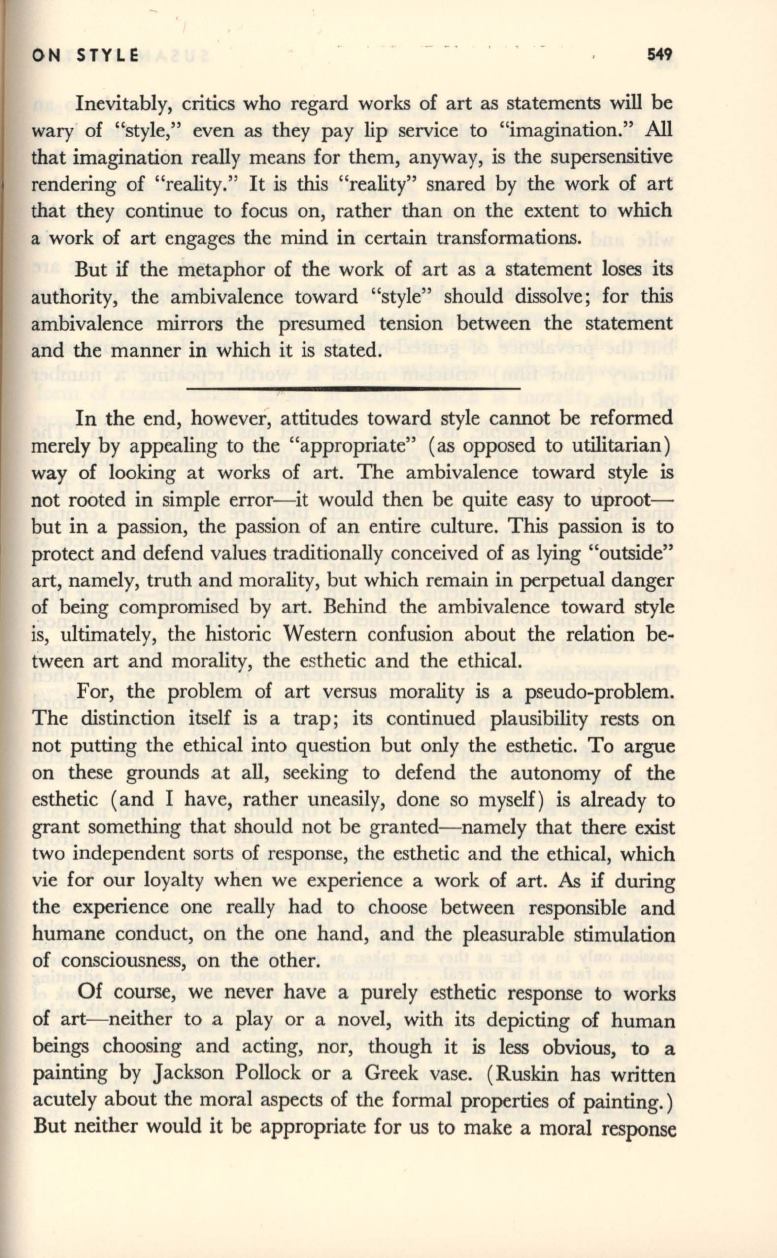
ON STYLE
549
Inevitably, critics who regard works of art as statements
will
be
wary- of "style," even as they pay lip service to "imagination." All
that imagination really means for them, anyway, is the supersensitive
rendering of "reality." It
is
this "reality" snared by the work of art
that they continue to focus on, rather than on the extent to which
a work of art engages the mind in certain transformations.
But
if
the metaphor of the work of art as a statement loses its
authority, the ambivalence toward "style" should dissolve; for this
ambivalence mirrors the presumed tension between the statement
and the manner in which it is stated.
In the end, however, attitudes toward style cannot
be
reformed
merely by appealing to the "appropriate" (as opposed to utilitarian)
way of looking at works of art. The ambivalence toward style
is
not rooted in simple error- it would then be quite easy to uproot–
but in a passion, the passion of an entire culture. This passion is to
protect and defend values traditionally conceived of as lying "outside"
art, namely, truth and morality, but which remain in perpetual danger
of being compromised by art. Behind the ambivalence toward style
is, ultimately, the historic Western confusion about the relation be–
tween art and morality, the esthetic and the ethical.
For, the problem of art versus morality is a pseudo-problem.
The distinction itself is a trap; its continued plausibility rests on
not putting the ethical into question but only the esthetic. To argue
on these grounds at all, seeking to defend the autonomy of the
esthetic (and I have, rather uneasily, done so myself) is already to
grant something that should not be granted-namely that there exist
two independent sorts of response, the esthetic and the ethical, which
vie for our loyalty when we experience a work of art.
As if
during
the experience one really had to choose between responsible and
humane conduct, on the one hand, and the pleasurable stimulation
of consciousness, on the other.
Of course, we never have a purely esthetic response to works
of art-neither to a play or a novel, with its depicting of human
beings choosing and acting, nor, though
it
is
less obvious, to a
painting by Jackson Pollock or a Greek vase. (Ruskin has written
acutely about the moral aspects of the formal properties of painting.)
But neither would it be appropriate for us to make a moral response


